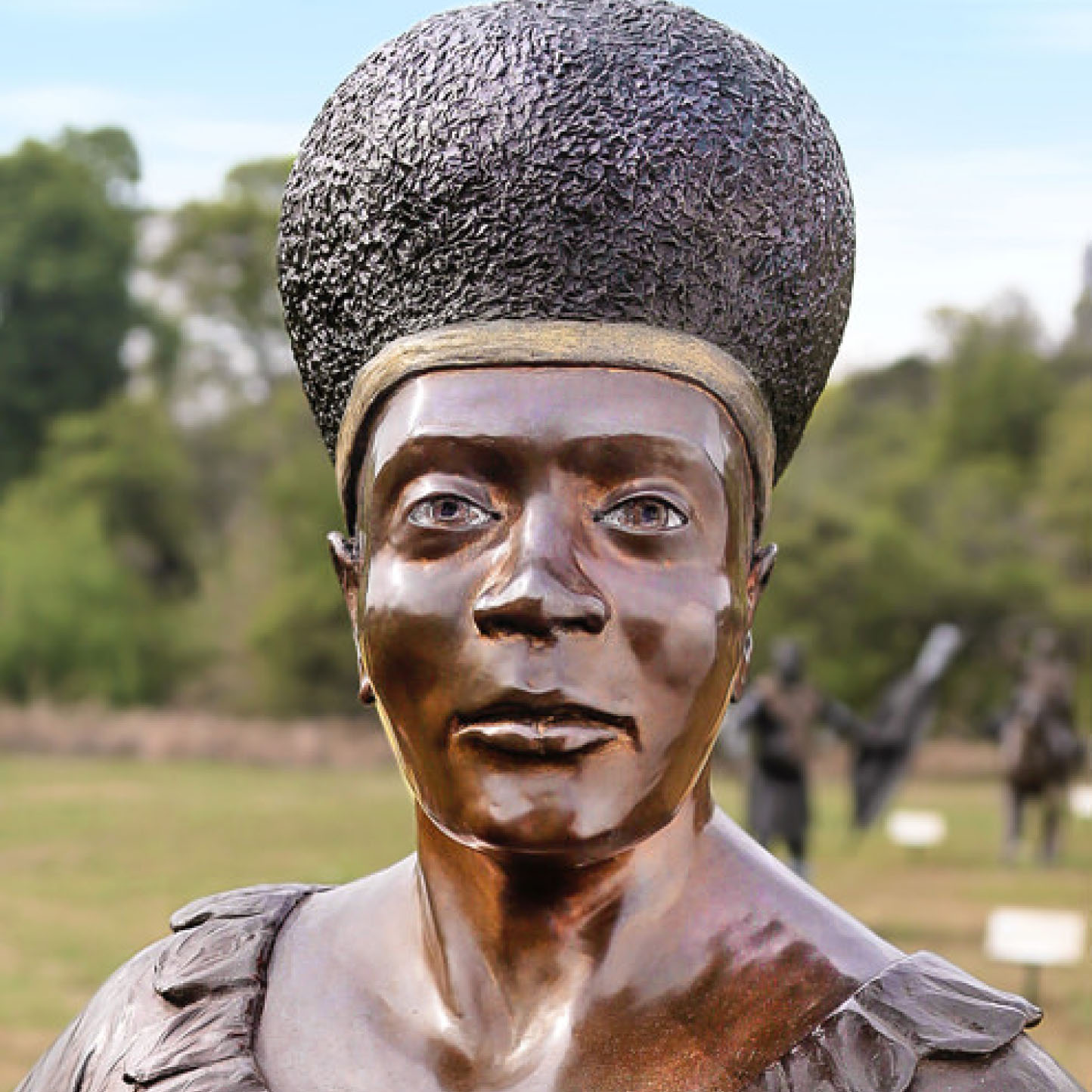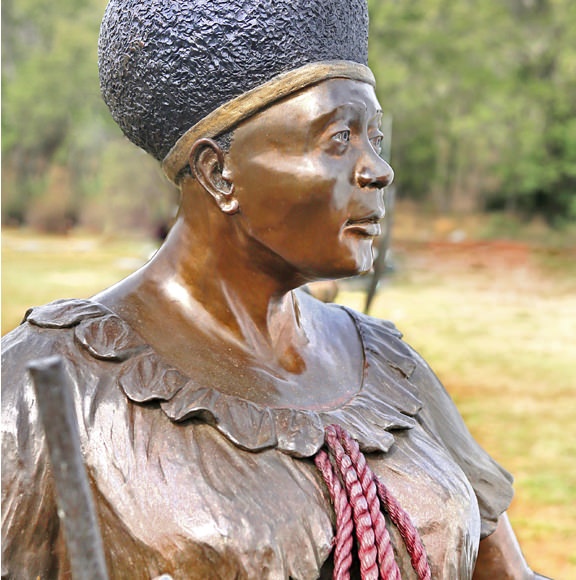


"A woman of extraordinary diplomatic ability and strength of character, an experienced and capable opposition which the colonial administration was for some time incapable of dealing with."
Mr Robert Coryndon, British Resident Commissioner of Swaziland, 1907
Queen Labotsibeni Mdluli
1856 – 1925
Queen Mother and Queen Regent of Swaziland
Labotsibeni Mdluli was born in Swaziland to the northern Mdluli clan, which was distinguished for its skill in military intelligence.
She was born while her father, Matsanjana Mdluli, was at war in a dispute with chief Tsibeni of the baPedi. Despite the circumstances of her birth, she lived a life dedicated to preventing war, but would be linked to her father's former adversary through her name, Labotsibeni.
She married into Swazi Royalty and she assumed the role of Queen Regent in 1890 upon the death of the King, her husband, because her subjects felt that the natural heirs were neither ready nor suitable to govern. She is recognized by the Swazi as one of the greatest Queen Mothers and Regents in Swazi history.
Labotsibeni provided much needed leadership in her role as monarch and Deputy Head of State and proved a shrewd and strategic match to her British colonial counterparts.
She spent her entire reign contesting British claims to the land of her people and tried to buy back land that her husband had given as concessions to the Boers and the British in a complicated system of assigning land, grazing pasture and mining rights. The Land Partition Proclamation of 1909 left the Swazis in control of only about one third of their country. Labotsibeni acknowledged that she could not get back the land militarily and that the land had become a commodity to buy and sell on an open market.
She then set up a fund and asked her people to contribute money to buy back their own land from the colonial government. Although it was discontinued in 1915, King Sobhuza II revived the fund in the late 1940s so that the Swazi had repossessed about 60% of the land by the end of the 1960s.
Her anti-land alienation campaign coincided with the African struggle against the 1913 Natives Land Act in South Africa, and Labotsibeni helped raise money to send the delegation of the South African Native National Congress (SANNC) to Britain in 1914. Labotsibeni and Crown Prince Sobhuza (later King Sobhuza II) provided the initial funds to set up the SANNC newspaper, Abantu-Batho. In recognition of her contribution, Labotsibeni would subsequently be elected as an SANNC Deputy President.
Throughout the 1920s and 1930s, Swazis were involved in South African political organizations.
Labotsibeni believed strongly in the power of education and the importance of literacy for a twentieth-century head of state. As a result, despite the opposition of elders and the Swazi aristocracy, she arranged that a school be established in Zombodze and had the best tutors from Natal teach the crown prince. As a result, in 1921 Swaziland had a monarch who had received more formal education than several African heads of state at the end of the colonial era in the 1960s.
Queen Labotsibeni died in Embekelweni, then the Swazi national capital. She was given the name Gwamile, 'The Indomitable One', by her Swazi subjects in recognition of her ability to contain colonial encroachment and to defend Swazi independence and culture.
She is credited with restoring most of the country's political and economic power between 1902 and 1921, an enduring legacy of Labotsibeni's moral stature, radical anti-colonialism and political shrewdness.

